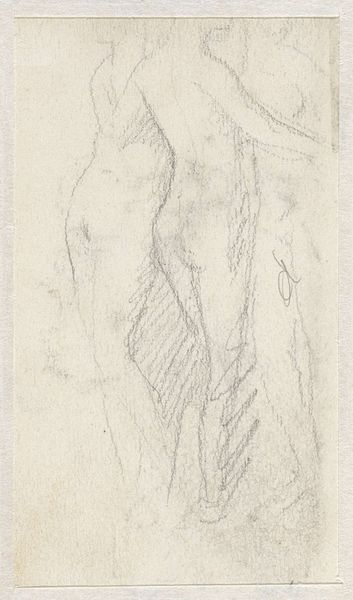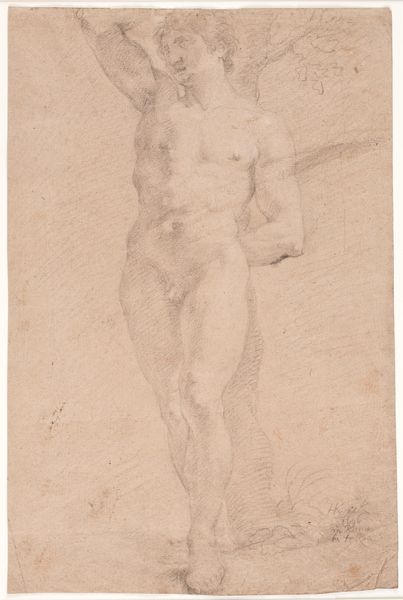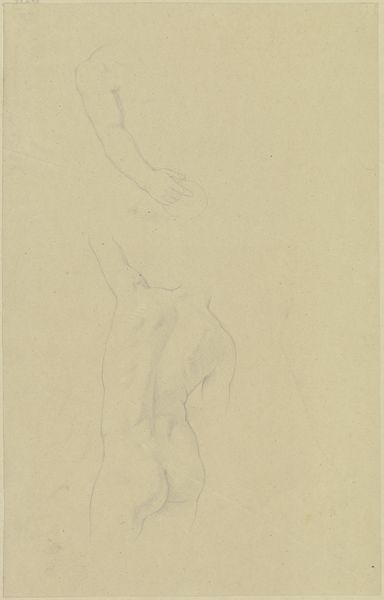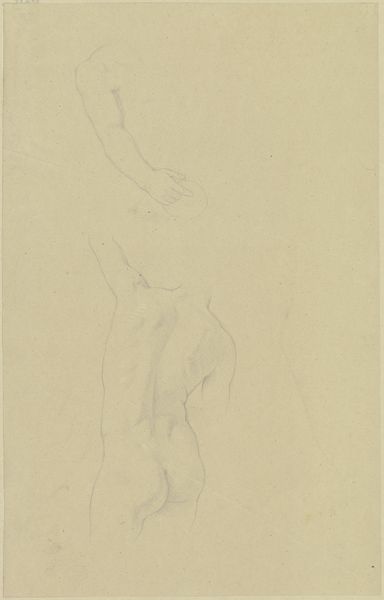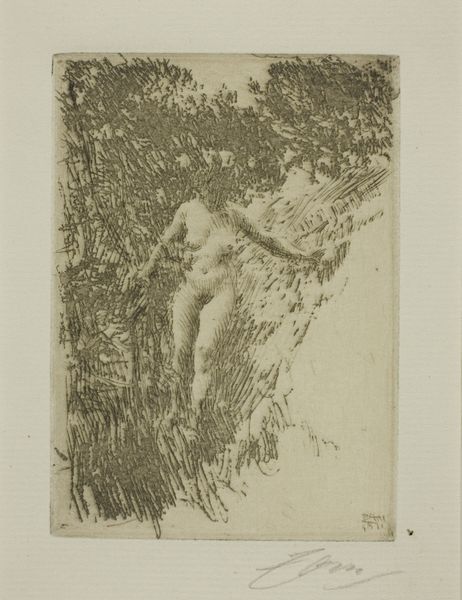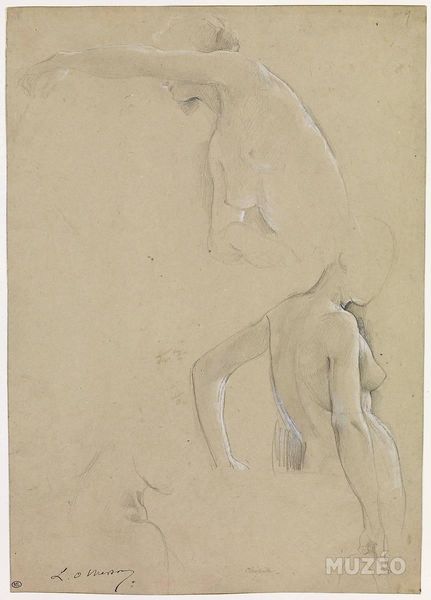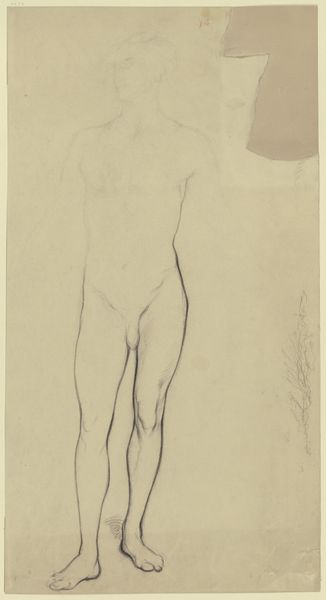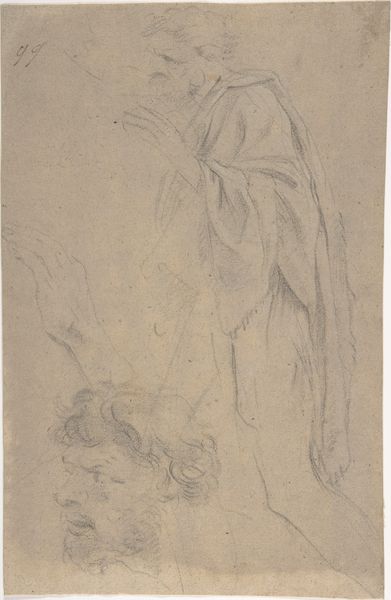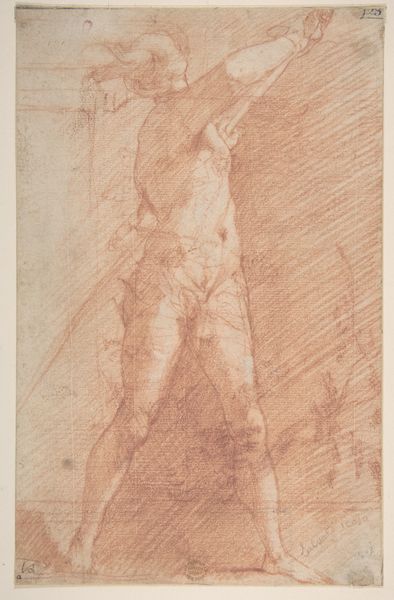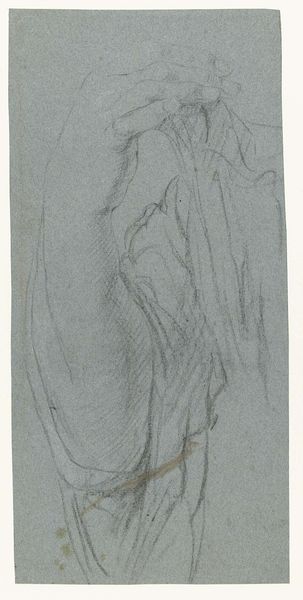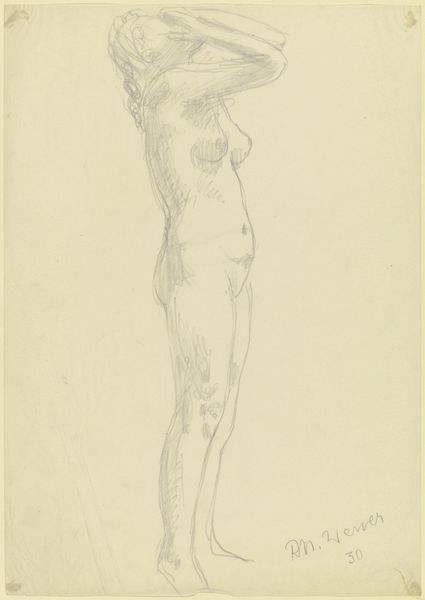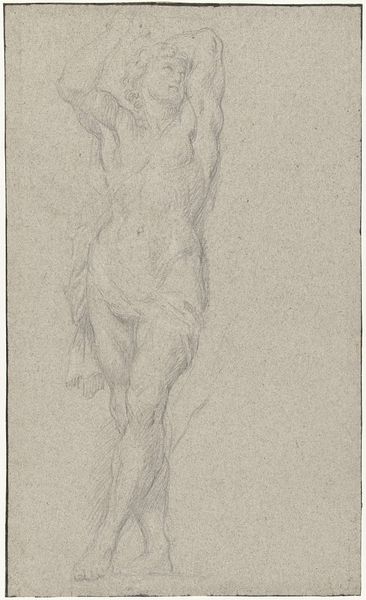
drawing, dry-media, charcoal
#
drawing
#
charcoal drawing
#
dry-media
#
pencil drawing
#
charcoal
#
nude
Dimensions: overall (approximate): 51.6 x 35.7 cm (20 5/16 x 14 1/16 in.)
Copyright: National Gallery of Art: CC0 1.0
Editor: This is "Christ in Prayer" by Ivan Meštrović. It's a charcoal drawing, and I'm really struck by the raw physicality of the figure; the visible marks of the charcoal really seem to emphasize the struggle conveyed by the posture. How do you interpret this work? Curator: I see it as an exploration of labor, both in the represented figure and the artist's own physical engagement with the material. Consider the social context. Meštrović was working at a time of intense industrial change and class struggle. This drawing isn’t just about religious piety. It's a depiction of toil, struggle, and perhaps, through prayer, a seeking of solace from these hardships. What do you make of the repeated use of nudes at the time, as it was applied to historical, religious, or even mundane genre subjects? Editor: It's interesting to think of the 'nude' less as about sexualising and more about democratising or perhaps 'universalising' the worker by divesting him of the cultural cues that define a time, a place, a religion… It puts an almost classical, almost heroic value on working body. Curator: Precisely! Think also about the availability and affordability of charcoal during Meštrović’s time. It was a readily available material, linked to both artistic production and industrial processes. It asks, 'Is this 'high art,' or is it documenting the labor inherent to working with these rough and common materials, charcoal and paper?' Editor: So, it is both subject *and* object which provide clues? I see how the drawing itself becomes a document of labor, reflecting the physical effort of the artist. It makes me think about accessibility too: both Christ in Prayer, and the cheap charcoal for every artist's use... Thank you! Curator: Exactly. Examining the materiality and means of production gives us a richer understanding of the artwork's social and cultural significance, offering a new perspective.
Comments
No comments
Be the first to comment and join the conversation on the ultimate creative platform.
